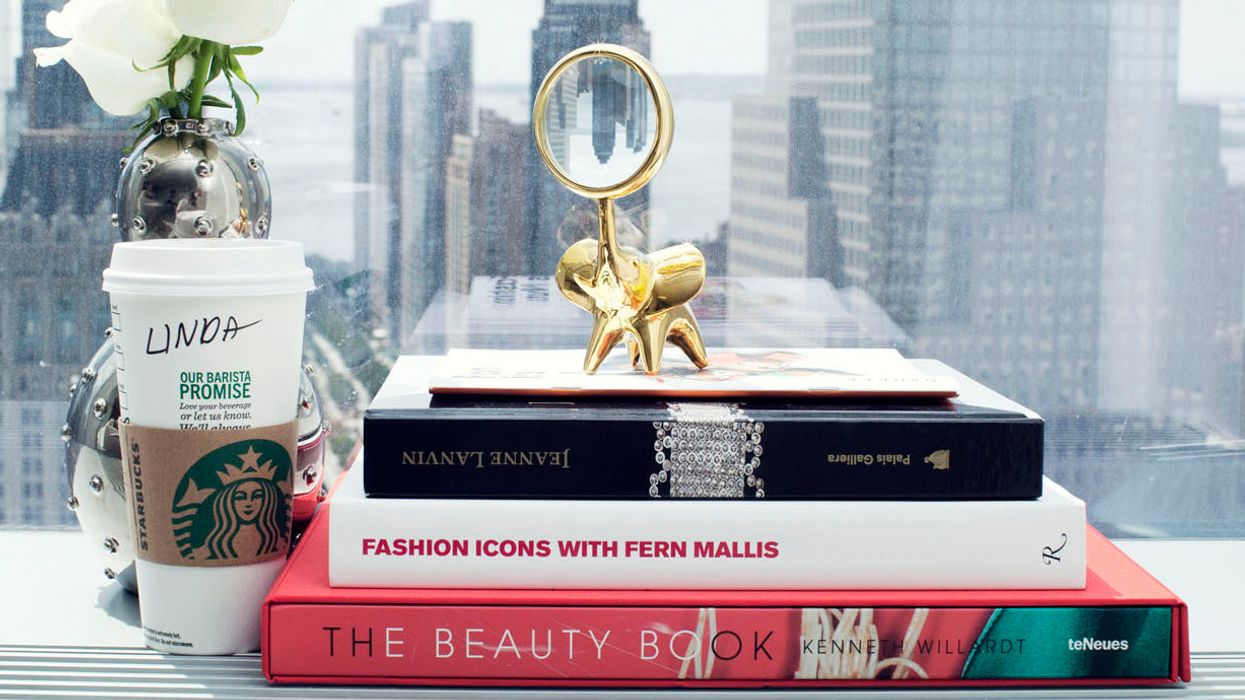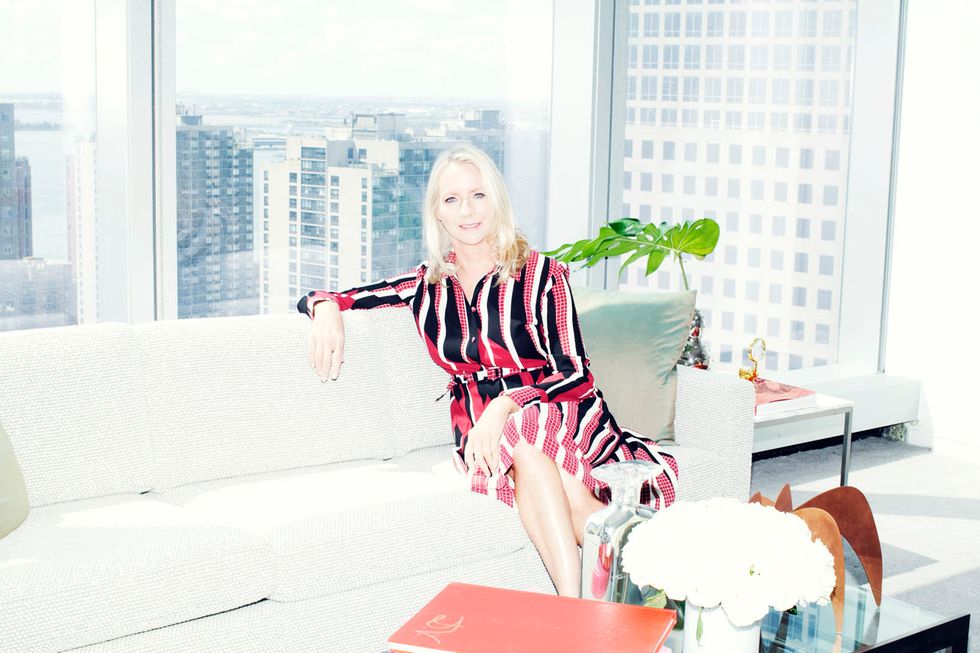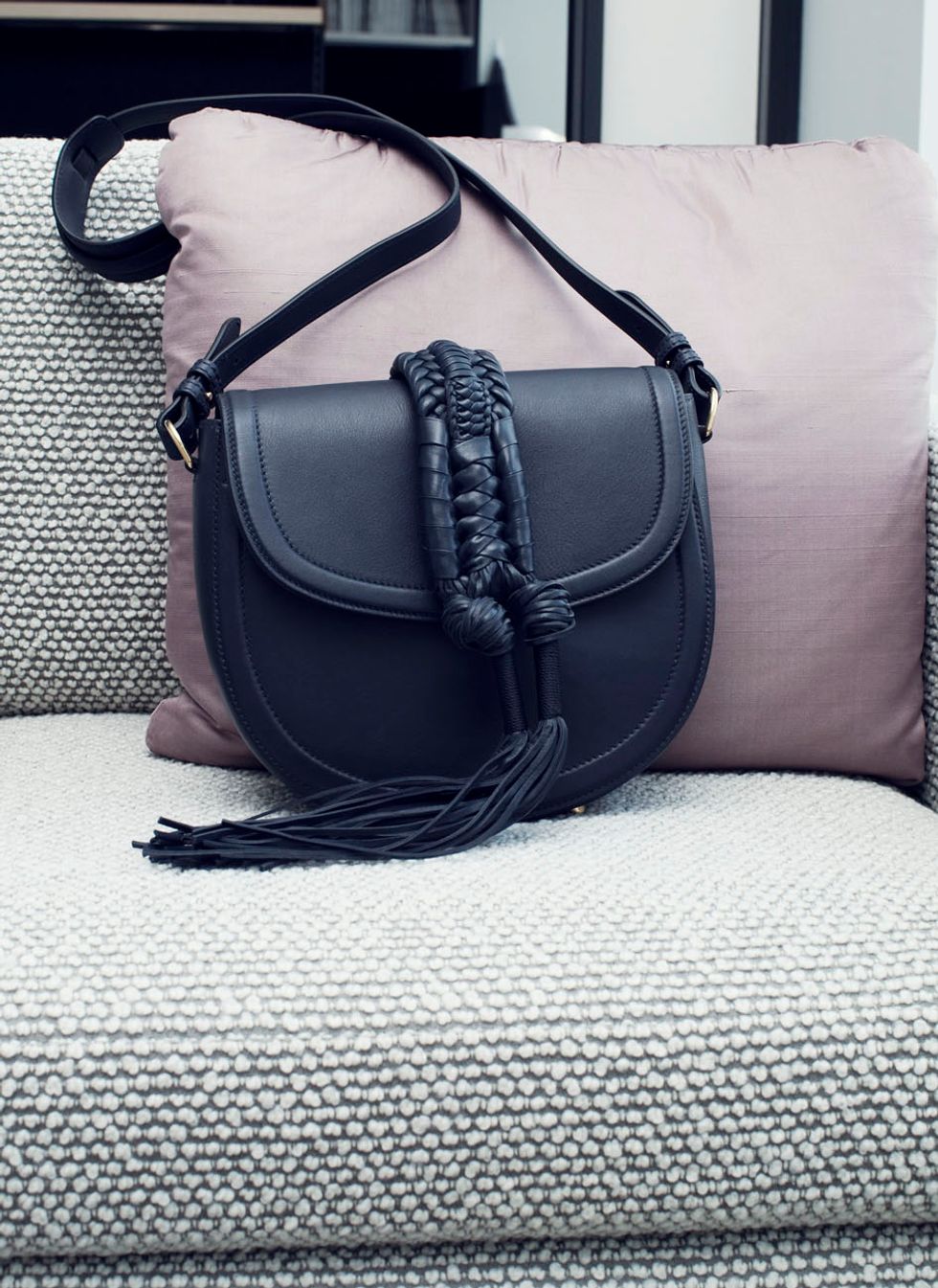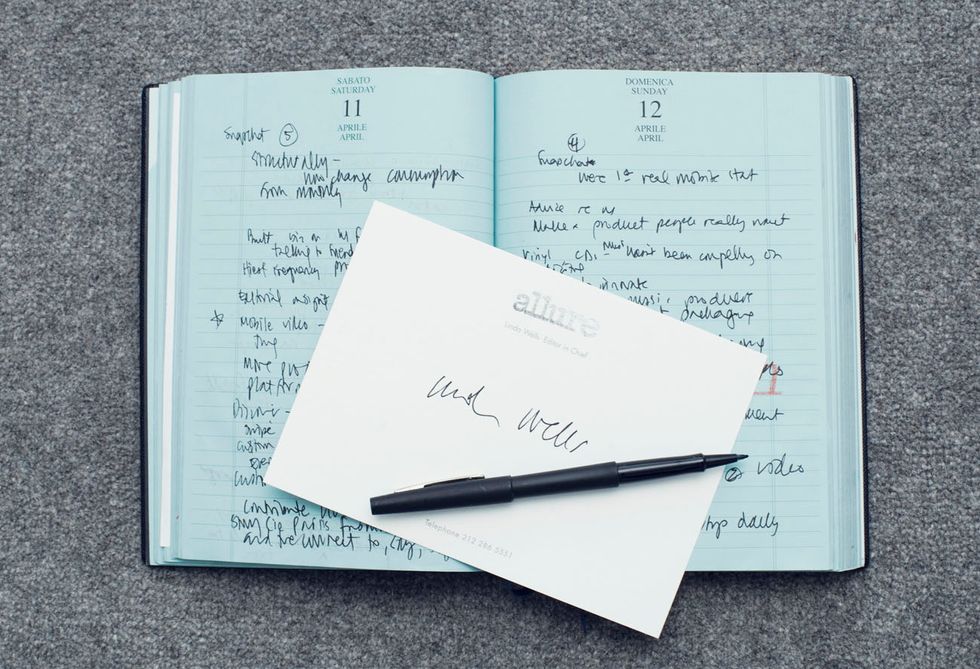Deskside: Allure Magazine's Editor-in-Chief Linda Wells
On making mistakes and surviving humiliation, drinking at least four cups of black tea, and how she’s staying innovative.

If there is one topic that has been looming over the print and press industry in the past few years, it is that the digital age undoubtedly marks the death of it. Or more accurately, that print pubs just can’t seem to figure out how to ditch paper and make it online… and all while somehow increasing advertiser revenue. But just one cursory search on anything skincare or lip gloss related (hell, and so much more) and chances are you’ll land on something penned (wait, more like typed) by the editors at Allure.
You can credit its digital success to the beauty glossy’s Editor-in-Chief, Linda Wells, whose tenor since its very first days has shaped and shifted a onetime print-only magazine into what it is today. So we posted up with her at Condé Nast HQ to talk making mistakes and surviving humiliation, drinking at least four cups of black tea, and how she’s staying innovative.

ON WORKING LONG HOURS AT THE BEGINNING OF HER CAREER:
“I was an English major with a lot of fine arts and art history and wanted nothing more than to write and deal with images. My first job was as an editorial assistant in the beauty department at Vogue. I loved it immediately, but I was so afraid of being fired that I worked all the time—late at night, on weekends, doing anything anyone asked me to do. I gradually moved up the ladder from unofficial Xerox repair person and coffee fetcher to writing and editing.
Five years later, I went to the New York Times as a reporter and then as a writer and editor at the New York Times Magazine. I wrote a column about beauty every other week, did some fashion writing and editing for Carrie Donovan, and took on the job of food editor when the previous one quit. It was pretty much three jobs, and I was in heaven.
My real beginnings in fashion and beauty started earlier. I used to take my allowance to the drugstore and buy skincare products. And for my high-school graduation, I asked for head-to-toe Ralph Lauren.”
ON MAKING MISTAKES AND LEARNING TO SURVIVE HUMILIATION:
“I basically learned by listening (a.k.a. eavesdropping) and watching (a.k.a. snooping) and reading upside down. Even just retyping an editor’s copy, which I did a lot at Vogue, was a lesson in how to edit. I had my struggles though. At Vogue at the time, the beauty department fact-checked each other’s copy and we made more mistakes than anyone has any business making. I misspelled the name of an art gallery, and it went to press. (This was long before Google.) That would have been bad enough, but it became a fiasco because that particular gallery represented Alexander Liberman, who happened to be the editorial director of Condé Nast. Yeah, not at all good.
At the Times, one of my first editing assignments was a William F. Buckley Jr. piece, and my boss told me not to hold back. So I didn’t. And when I sent my edits to Mr. Buckley, his secretary called to inform me, icily, that no one edits Mr. Buckley—and he would be taking up the matter with the managing editor of the paper, Abe Rosenthal. This wasn’t exactly how I wanted to make a name for myself in the newsroom.
Everyone today talks about failing as being necessary to succeeding, but that wasn’t such a popular notion back when I made these mistakes. Ultimately, I learned what not to do. And I learned that I could survive humiliation.”
ON LEARNING FROM YOUR MISTAKES:
“I learned that everyone makes mistakes and what's crucial is how to recover from them. I became a meticulous-slash-paranoid reporter, making sure every fact was correct before I filed a piece. I learned what constitutes a good photograph, and what to do with a bad one. Alexander Liberman always said if the photo is bad, make it bigger. And now I do that all the time.”


ON HER AVERAGE DAY:
“My day is usually chockablock with meetings, most of them about digital, video, images, strategy, social, story ideas, integrations, native—I try to keep the meetings short and sweet, but sometimes we get on a roll and don’t want to stop talking. I edit and write between meetings.”
ON HER DAILY READS:
“The New York Times, New York Post, Wall Street Journal, WWD, The Business of Fashion, Jason Hirschorn @MediaRedef, Jason Hirschhorn @FashionRedef, ShellyPalmer newsletter, LZ Sunday Paper newsletter, Medium, Mashable, Slate, Flipboard, NYTimes: What We’re Reading newsletter, Broadly, The Coveteur, New Yorker, New York Magazine, The Atlantic, Vogue.com, PureWow, Vogue, W, Glamour, Harper’s Bazaar, Marie Claire, GQ, Vanity Fair, Wired, Bon Appetit, Architectural Digest, CN Traveler, Departures, alumnae magazines, food labels. From there, any fiction I can squeeze in.”

ON WHAT SHE CAN’T LIVE WITHOUT ON A WORKDAY:
“A venti soy latte, black flair pens, reading glasses from French pharmacies, an ancient Hermès notebook, Instagram, four cups of black tea with stevia. Pilates before work or SoulCycle after.”
ON THE BIGGEST PERKS OF THE JOB:
“Meeting and learning from creative people in different fields. Working with women who are just starting their careers. And skincare products.”
ON STAYING INNOVATIVE AND RELEVANT:
“I constantly question what I’m doing and what Allure is doing and looking at what digital analytics and social tell me. Reading and seeing things, listening to social buzz, new music, traveling—it’s really a privilege to be able to do this and call it work.”

ON HOW THE DIGITAL AGE IS CHANGING PUBLISHING (AND WHAT IT ISN’T CHANGING):
“Clearly, when the medium changes, the way people consume content changes. We need to communicate with people in different ways, depending on the platform. What isn’t changing is the need for creative minds, the need for expertise, the need for mutual trust and respect with your audience, and the need to inspire and inform them.”
ON THE BEST ADVICE SHE CAN GIVE ASPIRING WRITERS:
“Work for the best people you can and learn from every situation—even the bad ones. Especially the bad ones. A horrible boss can sometimes teach you more than a good one because you learn, vividly, how not to behave.
One of my not-so-nice bosses at the New York Times made me read the Times style guide cover to cover. It was something like 300 pages in a ring binder and it was all about commas, semicolons and “which or that.” It was a pretty dry read, but I’m grateful to him to this day. If you’re an aspiring writer or editor, the best thing you can do is read good writing, especially before you sit down and write. I have a file of essays I love, and I’ll read one or two before I put my fingers on the keys; I want the good stuff to enter my bloodstream and make me better.
Find your voice and let that come through everything you write, even if the subject is dry and dull. Once you’ve written a piece, go back and reread it, listening to the rhythms of the sentences and words. Change the sentence structure, enliven the verbs, and make your writing sing. Make sure what you’re writing and editing gives you pleasure—that has to come through everything you do.”

ON WHAT’S NEXT FOR ALLURE:
“Next year is a big one for us. Allure is celebrating its twenty-fifth anniversary. We have big plans for mobile, video, and digital. Stay tuned.”